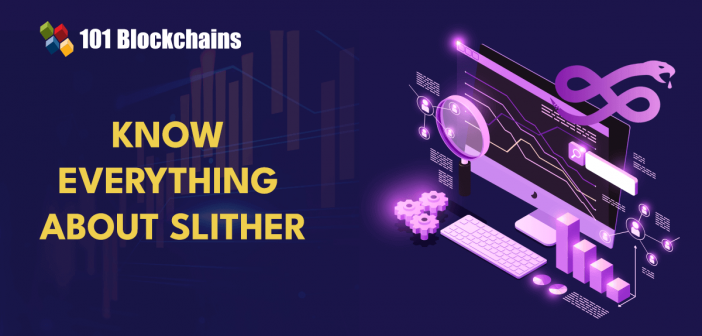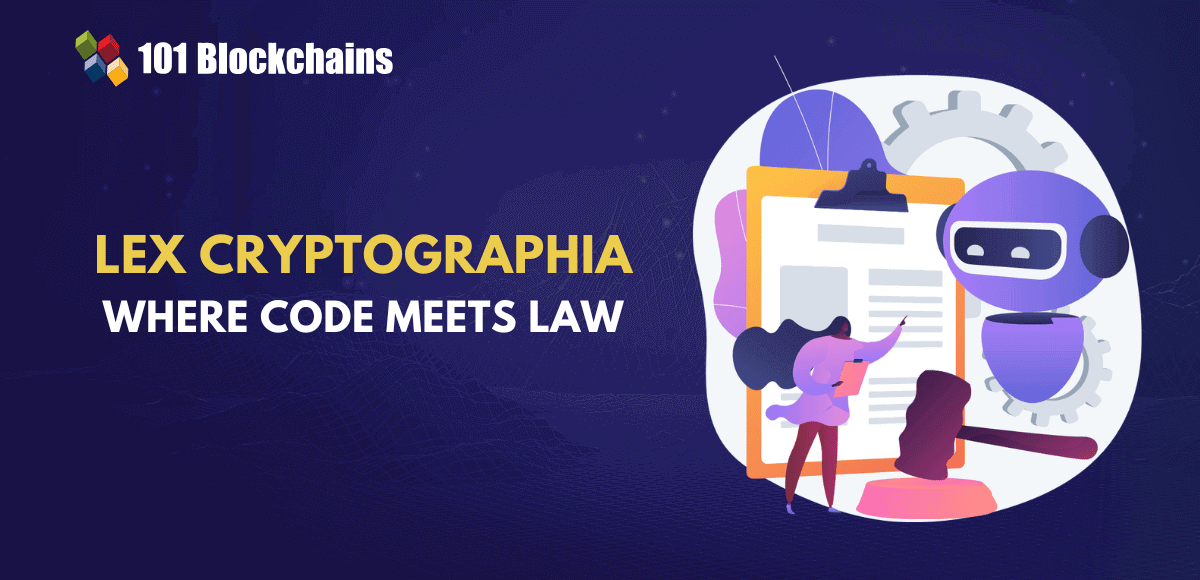Learn how blockchain truly works, master key definitions, and uncover what makes smart contracts so "smart." Dive into the fundamentals, gain valuable insights, and start your blockchain journey today!

- Solidity & Smart Contracts
James Howell
- on August 11, 2023
Slither: A Leading Static Analyzer for Smart Contracts
Smart contract development is one of the integral highlights of the blockchain and web3 ecosystem. The arrival of new tools, such as static analyzers, has been one of the prominent highlights of progress in blockchain. One of the most popular frameworks for static analysis of smart contracts emerged in 2018. Trail by Bits introduced Slither as a static analysis framework for Solidity, and the Slither Solidity interplay gained formidable traction.
Slither has the capability to run a collection of vulnerability detectors and print visual information regarding contract details. Furthermore, you could also notice that Slither offers an API for easier scripting of custom analysis tasks. It is a powerful tool for helping developers identify vulnerabilities and improve their understanding of code. The following post offers you an introduction to Slither and its capabilities, along with a description of its working.
Build your identity as a certified blockchain expert with 101 Blockchains’ Blockchain Certifications designed to provide enhanced career prospects.
Introduction to Slither
The first thing you would need in a Slither tutorial is a simple definition of the tool. It is a static analysis framework for smart contracts written in Solidity. The founders of Solidity, Trail by Bits, utilized Python 3 for writing the framework. It could provide an effective tool for evaluating smart contract code to identify errors and vulnerabilities. On top of it, the Slither smart contract analysis framework also offers refined data regarding smart contract code and flexibility required for supporting different applications. As of now, the primary functionalities of Slither revolve around the following use cases.
Slither can support automated optimization detection for identifying code optimizations that could have escaped the attention of compilers.
Automated vulnerability detection is also another addition among responses to “What is Slither blockchain?” as Slither can facilitate detection of multiple smart contract bugs. Slither can help in detecting bugs and vulnerabilities in smart contract code without any manual intervention or additional efforts for specifying conditions of the analysis.
The support of Slither for smart contract analysis also helps with functionalities of assisted code review. Users can access the functionalities of Slither during the smart contract development process directly by leveraging its API.
The answers to “What does Slither do?” also draw references to the functions of code explanation. Slither can help in creating summaries of smart contract information and display the smart contract details. As a result, developers could always access smart contract codebase to study it.
One of the most interesting highlights of Slither is that it is the first open-source framework for static smart contract analysis on Solidity. Slither is a crucial resource for smart contract developers, security audit companies, academic researchers, or security experts in web3. You can also refer to a Slither Solidity tutorial for information about the ways in which it has better bug-detection capabilities. As a matter of fact, Slither could perform better than other static analysis tools by offering better speed and robustness. Most important of all, Slither could maintain the ideal balance between detecting vulnerabilities and false positives.
Curious to understand the complete smart contract development lifecycle? Enroll in Smart Contracts Development Course Now!
What are the Features of Slither?
The most noticeable query of learners about Slither revolves around the functionalities for developers. Solidity developers can think of responses to “How Slither works?” before using the tool to evaluate smart contracts. The best way to determine a basic impression of the working of Slither involves a review of the features of Slither.
First of all, you must notice that Slither offers speed and precision. It could play a crucial role in identifying actual errors and vulnerabilities in seconds without manual intervention. On top of it, Slither also offers higher customizability alongside a set of APIs for easier inspection and analysis of Solidity code. Here are some of the most noticeable features you can find in Slither.
- Detection of errors in Solidity programming logic with a limited number of false positives.
- Easier identification of the position of an error condition in the source code.
- In-built printers for faster reporting of crucial contract details.
- Easier integration into continuous integration or CI pipelines and Truffle builds.
- Correct parsing for almost 99.9% of public Solidity code.
- Detector API for scripting custom analysis tasks in Python programming.
- Intermediate representation with the help of SlithIR, its internal representation, for simpler analysis with higher precision.
- Average execution time of Slither is less than 1 second for each contract.
Want to get an in-depth understanding of Solidity concepts? Enroll in Solidity Fundamentals Course Now!
Working of Slither
The definition and features of Slither create curiosity regarding the working of the static smart contract analysis framework. Slither is capable of working as an integration with Slither code and the vulnerability detection system. Here is a brief overview of the working of Slither for auditing smart contracts without diving into the details.
- Slither starts the smart contract analysis process by leveraging static analysis through multiple stages. In the first step, Slither takes the Solidity Abstract Syntax Tree or AST as the initial input. The AST is created by Solidity compiler with the help of contract source code. Slither also facilitates out-of-the-box functionalities for working with common frameworks, such as Truffle.
- The working of Slither Solidity smart contract analysis framework involves recovery of important details, such as a list of expressions, inheritance graph, and control flow graph of the smart contract.
- In the next step, Slither converts the contract code into SlithIR, which is an internal representation language. The internal representation language helps in writing more precise and accurate analyses. SlithIR relies on a single static assessment or SSA approach to enable processing for multiple code analysis tasks.
- The final step in the working of Slither involves execution of a collection of pre-defined analysis tasks. The pre-defined analysis tasks could help in providing enhanced information to different modules for distinct tasks, such as secure function calls and computation of data flow.
Start your journey to become a smart contract developer or architect with an in-depth overview of smart contract fundamentals, Enroll Now in Smart Contracts Skill Path
How is Slither Better than Other Static Analysis Tools?
The important highlights in a fundamental Slither tutorial also focus on a comparison with other top static analysis tools. Comparisons between Slither and other open-source smart contract static analysis tools for detecting Solidity smart contract vulnerabilities could showcase why Slither is the favorite. Some of the notable competitors of Slither include Solhint, Securify, and SmartCheck.
According to the official publication by Trail of Bits, Slither developers compared smart contract static analysis tools according to the reentrancy detectors. Why? Reentrancy attacks are one of the oldest, most dangerous, and widely discussed security issues. The reentrancy detector serves as one of the major highlights of all smart contract analysis frameworks. How does the Slither smart contract testing framework perform better than its competitors? Let us find the answers with an overview of the practical findings from a comparison between Slither and other tools.
-
Accuracy
The accuracy of a smart contract analysis tool depends on multiple factors, such as flagged contracts, number of detections for each contract, and false positives. According to the findings by Trail of Bits, Slither offers better accuracy with a false positive rate of 10.9%, which is the lowest.
Another significant highlight in guides for “What is Slither blockchain?” would suggest the higher false positive rate of competitors. The nearest competitor to Slither in terms of false positive rate is Securify at 25%. Interestingly, Slither also performs better in terms of flagging contracts with reentrancy bugs.
For example, SmartCheck implements flagging for a large number of contracts, thereby leading to higher false positives. However, Securify flags fewer smart contracts, which leads to failure in detecting true positives. Therefore, Slither turns out as the winner by establishing the right balance between flagged contracts and the number of false positives.
-
Robustness
The robustness of static smart contract analysis tools would reflect on the ‘Failed analysis’ collection for each tool. Slither performs better in terms of robustness as it fails only in the case of 0.1% of all contracts. Among the other tools, Securify and SmartCheck are the least robust, with failed analysis rate exceeding 10%.
-
Performance
Another metric for evaluation of the capabilities of Slither for auditing smart contracts points at performance. You can review the performance of smart contract analysis tools on the grounds of average execution time and a number of timed-out analysis tasks. Slither delivers better results in performance than other tools as it offers better speed. On the other hand, competitors of Slither, such as SmartCheck and Solhint, rely on analysis of precompiled contracts or parsing Solidity source code.
The team behind Slither also expand their introduction to Slither Solidity tutorial by comparing Slither with Surya, another promising competitor. Surya is also one of the popular alternatives for understanding smart contract codes like Slither. However, Slither performs better than Surya with the flexibility for integration of more advanced information.
It is important to note that smart contract code analysis tools without the facility for integrating in-depth analysis tasks would focus only on superficial information. On the contrary, Slither offers better extensibility for addressing sophisticated tasks for summarizing code.
Want to know the real-world examples of smart contracts and understand how you can use it for your business? Check the presentation Now on Examples Of Smart Contracts
Practical Methods for Interaction with Slither
The fundamental concepts of Slither provide a clear impression of its dominance as a smart contract analysis tool. However, the introduction to “What does Slither do?” creates interest in methods for using Slither. How can you install Slither? What are the ways to identify bugs in smart contracts with Slither? Here are some of the best practices to start using Slither for smart contract analysis.
Methods for Installation of Slither
The foremost concern in the minds of any beginner to Slither would refer to the installation of Slither. You can install Slither Solidity contract analysis framework with the help of Python 3.8 and higher versions. It is important to note the supported compilation frameworks such as Embark, Brownie, Dapp, Hardhat, Waffle, Truffle, or Foundry. If you don’t plan on using these compilation frameworks, you can use Solc, the native Solidity compiler. Let us take a look at the different methods for installation of Slither.
-
With Pip
You can use the following command for installing Slither with pip,
pip3 install slither-analyzer
-
With Git
You can install Slither and find practical answers to “How Slither works?” with the help of a Python virtual environment. Subsequently, you can use the following command for installation of Slither.
git clone https://github.com/crytic/slither.git && cd slither python3 setup.py install
-
With Docker
The flexibility of installing Slither with Docker also provides another helpful option for developers. You could utilize the ‘eth-security-toolbox’ docker image, which features all the security tools alongside all the major versions of Solidity. It is important to remember that you have to mount the ‘/home/share’ to ‘/share’ directory in the container. Here are the commands you can use for installation of Slither by using Docker.
docker pull trailofbits/eth-security-toolbox docker run –it –v /home/share:/share trailofbits/eth-security-toolbox
Want to learn about the key elements of Solidity? Check out our Introduction to Solidity Presentation now!
How Can You Identify Vulnerabilities with Slither?
The capabilities of Slither for static smart contract analysis and the ease of installation prove its capabilities for web3 developers. You can find effective ways to use Slither for auditing smart contracts through an API by leveraging custom scripts. The API could help in accessing different functionalities such as,
- Identifying code that could help in modification of value of variables.
- Isolation of conditional logic statements, which are under the influence of the value of a specific variable.
- Look for other functions which are accessible through transitive approaches with calls to a specific function.
Apart from these functionalities, you can also use Slither to access other features to evaluate smart contracts and their efficiency.
Final Words
The potential of Slither as a flexible and versatile tool implies that it should be a mandatory tool for all smart contract developers. You can refer to responses for “What does Slither do?” and look beyond the simple descriptions. Slither delivers better accuracy, robustness, and performance as compared to its competitors. On the other hand, it includes a broad range of features that help smart contract developers access additional functionalities.
For example, you can use Slither integration through API for faster smart contract analysis during development. Most important of all, Slither is continuously developing and offers the assurance of effective detection of errors in the Ether sending function. It also has a lower false positive rate, which turns the verdict in its favor. Learn more about Slither by exploring its official documentation on GitHub now.
*Disclaimer: The article should not be taken as, and is not intended to provide any investment advice. Claims made in this article do not constitute investment advice and should not be taken as such. 101 Blockchains shall not be responsible for any loss sustained by any person who relies on this article. Do your own research!





